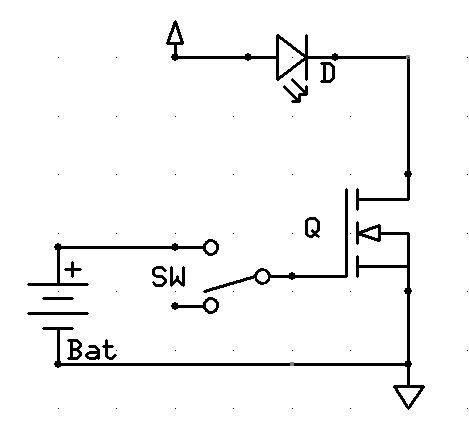I thought this was possible, but maybe not, I seem to have myself confused now.
I want to use a mechanical switch to energize a FET into conducting the negative side of an LED to the battery ground.
I wired it so that the source is connected to -LED, drain connected to BAT GND, the gate with a 100K to the source, and the mechanical switch switches the gate to the drain.
I thought this was the right way to do it, but it doesn't work. Touching the gate with my finger, which I did by accident, works, but nothing else. Is this just not possible? A + source isn't physically available and the mechanical switch alone won't like the current.
Will a BJT work for this?
Thanks.
I want to use a mechanical switch to energize a FET into conducting the negative side of an LED to the battery ground.
I wired it so that the source is connected to -LED, drain connected to BAT GND, the gate with a 100K to the source, and the mechanical switch switches the gate to the drain.
I thought this was the right way to do it, but it doesn't work. Touching the gate with my finger, which I did by accident, works, but nothing else. Is this just not possible? A + source isn't physically available and the mechanical switch alone won't like the current.
Will a BJT work for this?
Thanks.


